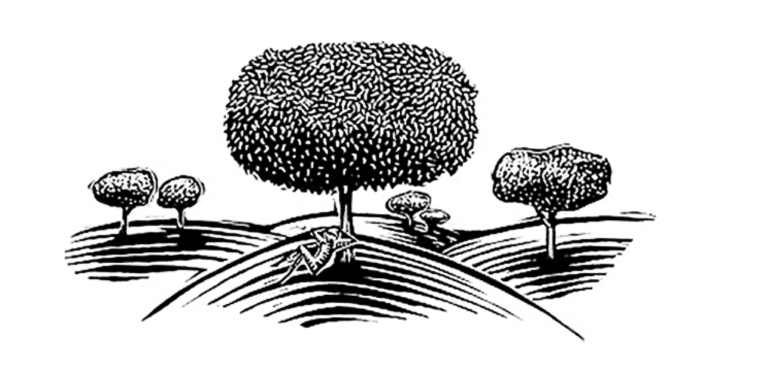I RECENTLY FINISHED a course of a powerful antibiotic, required to kill off a drug-resistant infection that had left me feverish and in debilitating pain. But while the medication ridded my system of what ailed me, it also eliminated other forms of microbial life in my body—species of which exist naturally in all of our bodies, many playing crucial roles in keeping us healthy.
The more I’ve learned about the world of microbes, the more curious I’ve become about their activities, both inside and outside our anatomies. Which is why, on a summer day not long ago, I visited Kate Scow, a professor at the University of California, Davis. We stood in the university’s agricultural research field, where I watched her scoop up earth and rub it between her fingers. It stuck together in clumps, like thick chunks of bread. To the casual eye, it was simply soil being soil. But unseen were the activities of the tiniest of beings cementing it all in place: the bacteria, viruses, and fungi known collectively as microbes.
“They’re the architects of the soil,” said Scow, who’s been studying soil biology for more than four decades. Less than a micron in diameter, microbes excrete long chains of carbon as waste, which glue together bits of clay, silt, and sand, keeping them from blowing or washing away and helping water percolate down to the roots of plants.
But that’s not all microbes do. The millions, perhaps billions, of microbes that live near plant roots perform a vast array of other duties, helping access nutrients, protect against diseases, and guard against drought or floods. Their intimate give-and-take with plants is hundreds of millions of years old. In a move that might seem strangely altruistic, plants push nearly a third of their photosynthesized sugar into the soil, feeding their colonies of tiny helpers.
“Nitrogen cycles through ecosystems, organic matter is made, carbon is stored,” Scow told me. “But how? The answer is microbes.”
It’s remarkable, when you think about it, that such landscape-scale movement is driven by organisms that can’t really move. And yet, in a way, they do: Some microbes get around their fixedness by sending out whisper-thin threads called hyphae, which suck in micronutrients and water molecules. Under a microscope, those hyphae look like strands of spider silk, extending in an intricate web far into the soil. As Scow described their reach, she crouched down, pulled her arms in tight, and then stretched out of her pose, her arms making swooping gestures up and down and over, acting out in hyperspeed the leaps of hyphae through air channels in the dirt.
Modern agriculture’s fertilizers, weedkillers, and pesticides tend to ignore and even harm microbes, either killing them outright or not replenishing the soil with leftover plant bits that supply their food. But on an organic farm, where plant matter is actively pushed back into the ground, you might find twice as many microbes in a vial of soil as you would on a conventional farm. In an ideal world, perhaps, all farming practices would support the teeming variety of creatures hidden from view.
When I mention agricultural fumigants, like those used to wipe soil clean for California strawberries and Florida tomatoes, Scow bristled. These chemicals liberally attack all fungi and bacteria, even the beneficial ones. “It’s just insane!” she said. “It’s like a full-spectrum antibiotic, constantly applied.”
She was sympathetic about my own recent, desperately needed course of full-spectrum antibiotics, however. After we left the field, we sat together in her dining room, and Scow offered me some of her homemade kombucha—a fermented drink made from a complex culture of yeast and bacteria—to help replenish my internal microbial ecosystem. She pulled out the jar, the mushroom-shaped microbial “mother” trailing tentacles into the amber liquid, and carefully filled a shot-glass. I took a sip: it was strong, almost vinegary. Scow regularly feeds the kombucha mother its elixir of black tea and sugar, and she enjoys a few ounces of the resulting microbe-rich brew every day. It’s a ritual that reminds her of a two-way relationship, she told me—of what microbes give us, and what they might like in return.



Comments
I have been thinking of hard it is to find fields unsprayed by nasty chemicals. Chemicals are everywhere now, and makng it hard for organic farmser to have organic land. We are a poisoned nation. This is terribly sad to me.
I have a biodynamic farm and i would like to find people who care.
Great article. I’ve always been a huge fan of the microbial world.Thank you.
Please Note: Before submitting, copy your comment to your clipboard, be sure every required field is filled out, and only then submit.